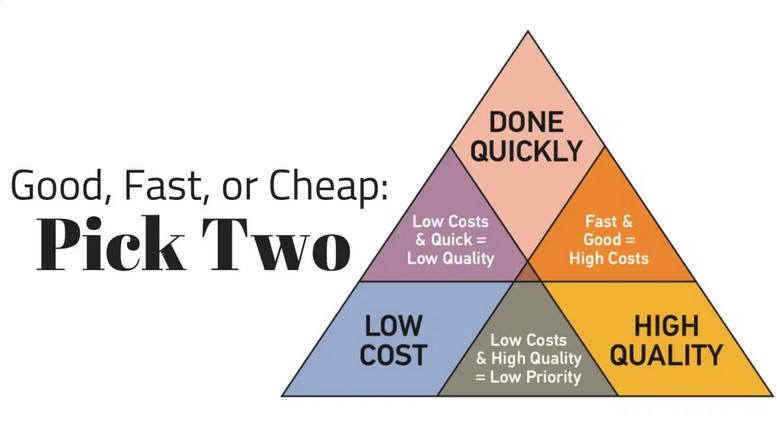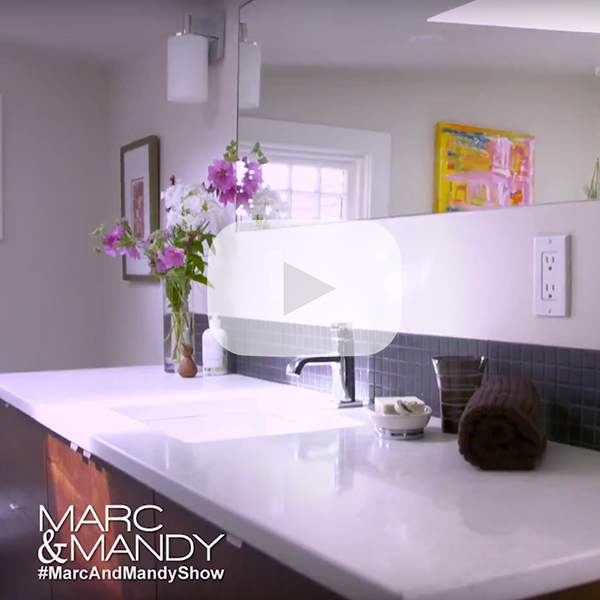We’re taking a small break from our bathroom series for March, but we’ll hopefully be back in April. In the meantime we’re going to talk about value engineering! For those of you who don’t know, value engineering is pretty much what it sounds like – we’re going to try and find some more value out of our dollars and our project.
Value engineering is a systematic, organized approach to providing necessary functions in a project at the lowest cost. It promotes the substitution of materials and methods with less expensive alternatives, ideally without sacrificing functionality. Value engineering is also called value analysis. Really, it’s about making the best use of the available budget – managing that triangle of good-fast-cheap as well as client expectations on the schedule/timelines, their non-negotiables, and the conditions upon which the end result is expected to function in, and what the expectations around that are.

There may be a few alternative names, but it comes down to 5-6 steps which may be repeated and apply to almost anything including renovations.
Step 1: Information Gathering
Knowledge is power! This step is all about collecting data and getting a clear understanding of the project and in the case of many residential projects establishing more finite parameters of the must-have items. Materials, schedule, costs, drawings and specifications are all open to scrutiny.
Step 2: Function Analysis
Analyze the functions of the elements identified in the previous step and evaluate their necessity to the goals of the project…. Or as I like to call it “the brief”. There are two forms of functions: “primary functions,” vital to the existence of the final product, and “secondary functions”, notable but not critical to the core of the project.
Another way to describe it is:
Basic function: That which is essential to the performance of a user function or the function describing the primary utilitarian characteristic of a product or design to fulfill a user requirement. A key defining question: “Can this function be eliminated and still satisfy the user?”
Required secondary function: Any function that must be achieved to meet codes, standards, or owner requirements.
Other secondary function: That which, if it is removed from the design, still allows both the basic and required secondary functions to be met.
For example, you require double ovens, and a large dining are as you host large family dinners every week. They are required in order to have the space to function but top tier stone countertops are not critical and could be substituted.
Step 3: Creative Speculation
Develop alternative solutions for delivering necessary building functions. Basically, a brainstorming exercise to generate potential solutions to reach the project functions. The focus is often on the big-ticket items because they have the most opportunity to deliver value. At this stage of the game, no viable options are eliminated, even those with serious flaws.
Questions that we go through:
- What is it?
- What does it cost?
- Why is it required?
- What is it worth?
- Is there an alternative that could do the job?
- Cost of that alternative?
Step 4: Evaluation
Assess the alternative solutions. By questioning the available options, we begin weighing alternatives against one another. The primary focus of this discussion should be how well each alternative can perform the function of the original solution. The details matter. Expectations matter too, so those must be discussed. Delivering value is tremendous but if the end result does not do what the owner intends, and the brief is overly compromised the project may not deliver the intended vision. Remember that every choice has consequences… be aware of the holistic effects of every alternative.
Step 5: Cost Analysis
Allocate costs to the alternative solutions. How much will the solution cost today? And how much will it cost over the life cycle? Will a lesser product need to be replaced earlier or require more maintenance or consume more energy?
Costs need to be detailed down as much as possible.

Step 6: Development
Develop the alternatives with the highest likelihood of success. Project timeline and available resources will influence the actions taken during this step. Verify cost estimates and/or validate other decisions during this time. At the very least, assemble all recommendations, their advantages and disadvantages and implementation plans.
The key to success of value-engineering is developing a more precise and appropriate definition of value. Ultimately, the homeowner is responsible for defining the quality level of a project. The designer, if used on the project, is responsible for producing a design that meets those expectations or requirements.
Owners often tend to define only the lower limit of those expectations and designers often exceed those minimums – basically out designing the budget which is a real bummer and painful for contractors that have to break the bad news to clients, as they sometimes believe that better quality always equals better value, but this isn’t always the better approach. Better quality usually comes at an increased cost and is not usually on a linear relationship with value. It’s possible that a one-level increase in quality could come at a two- to three-level increase in cost. This is why the owner must establish what constitutes value to everyone on the project and also have all parties who will be involved in the project come together at the start of the planning process.
Advantages & Disadvantages
For a project that is within budget, the value-engineering emphasis usually focuses on improving value in terms of operations, flexibility, expandability, life cycle, and quality. For a project over budget, the focus is usually on reducing project costs without eroding value. If a substantial cost reduction is required (more than 10-15%), the value-engineering exercise should focus on reconsidering the owner’s objectives.
A major disadvantage of value engineering is that it is often misperceived as simply a cost reduction method, not considering life cycle costs during the process. So be sure to keep the brief or vision and the non-negotiables front and center while keeping your expectations in line with your budget.
To listen to the full episode and read the show notes, visit www.AllThingsRenovation.com or click on the Podcast tab at the top of our homepage at www.woodbeart.com.


